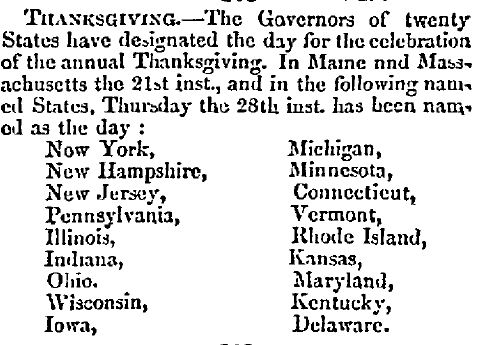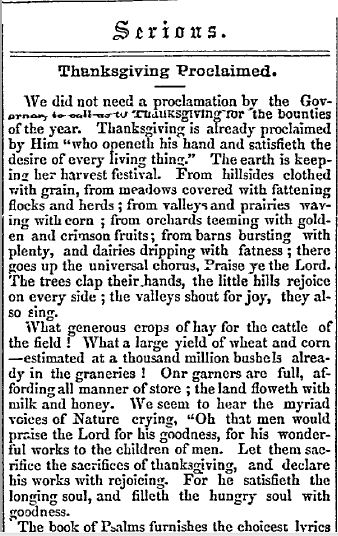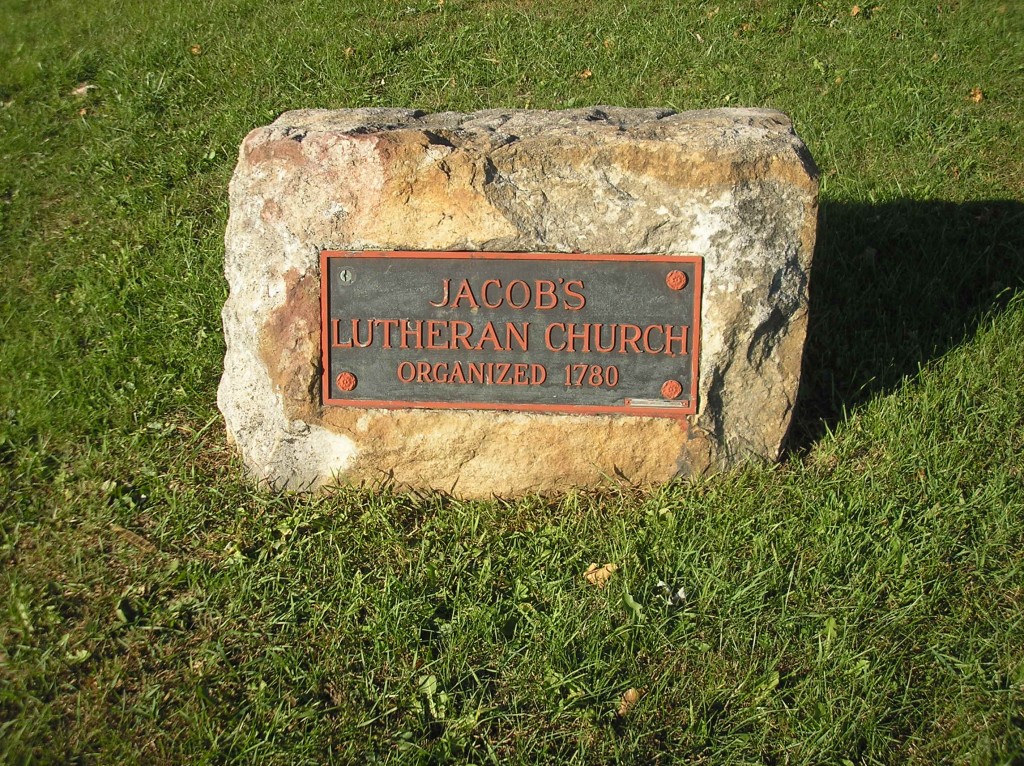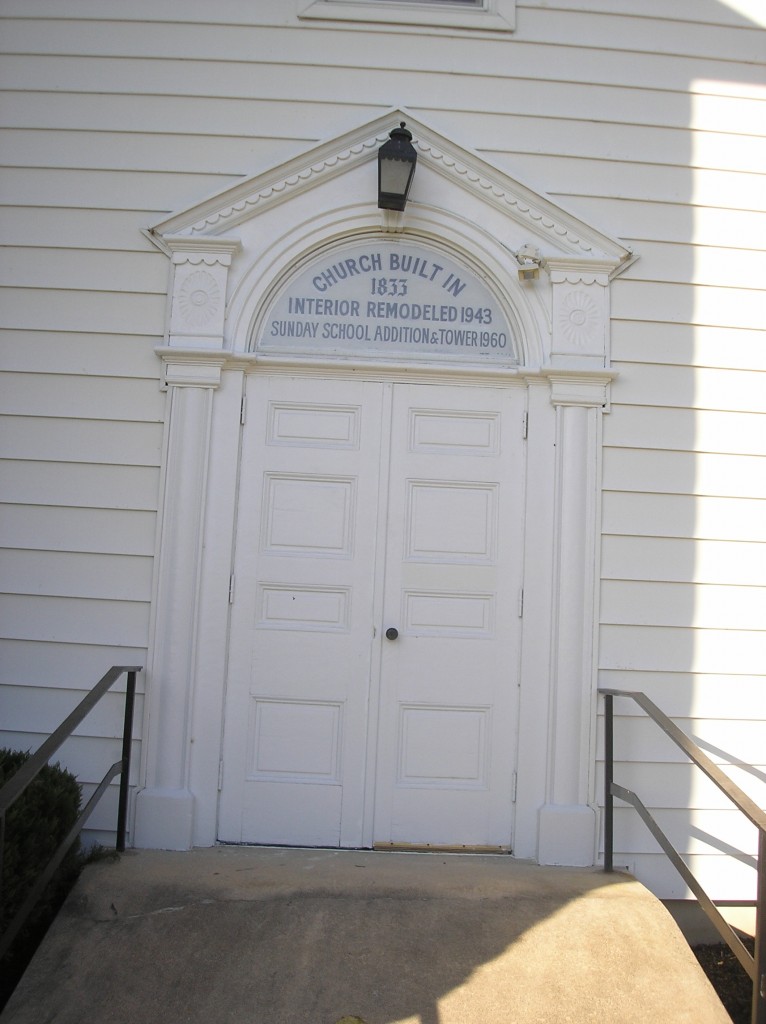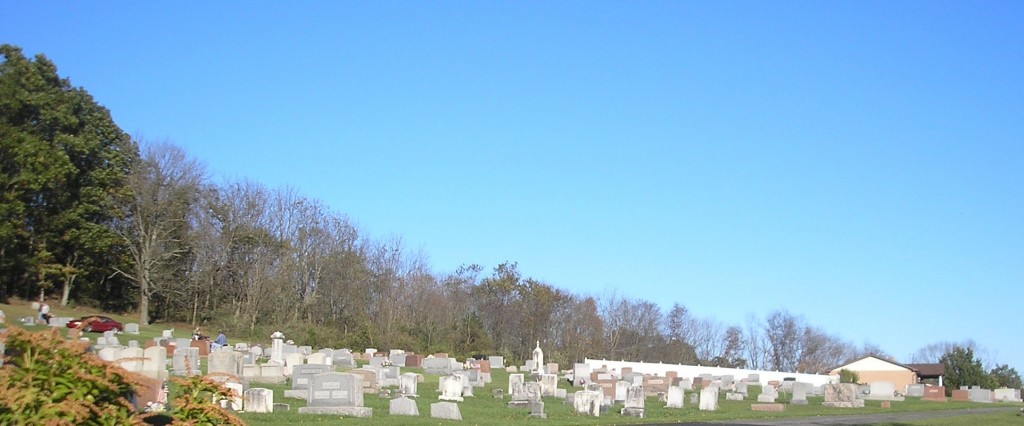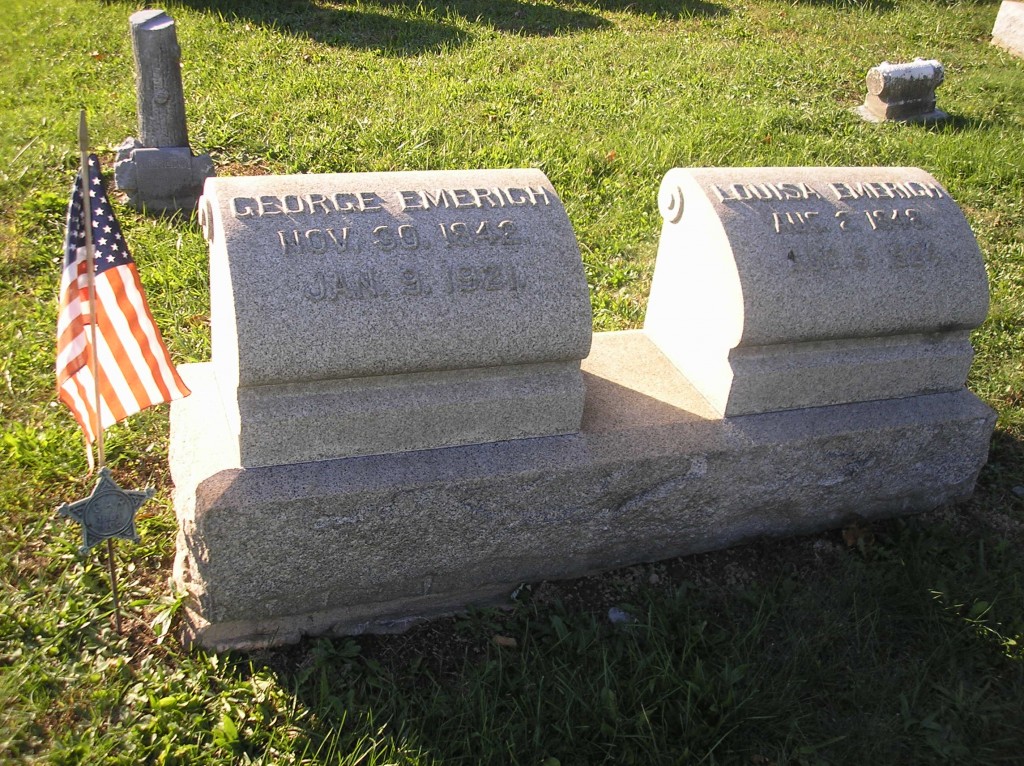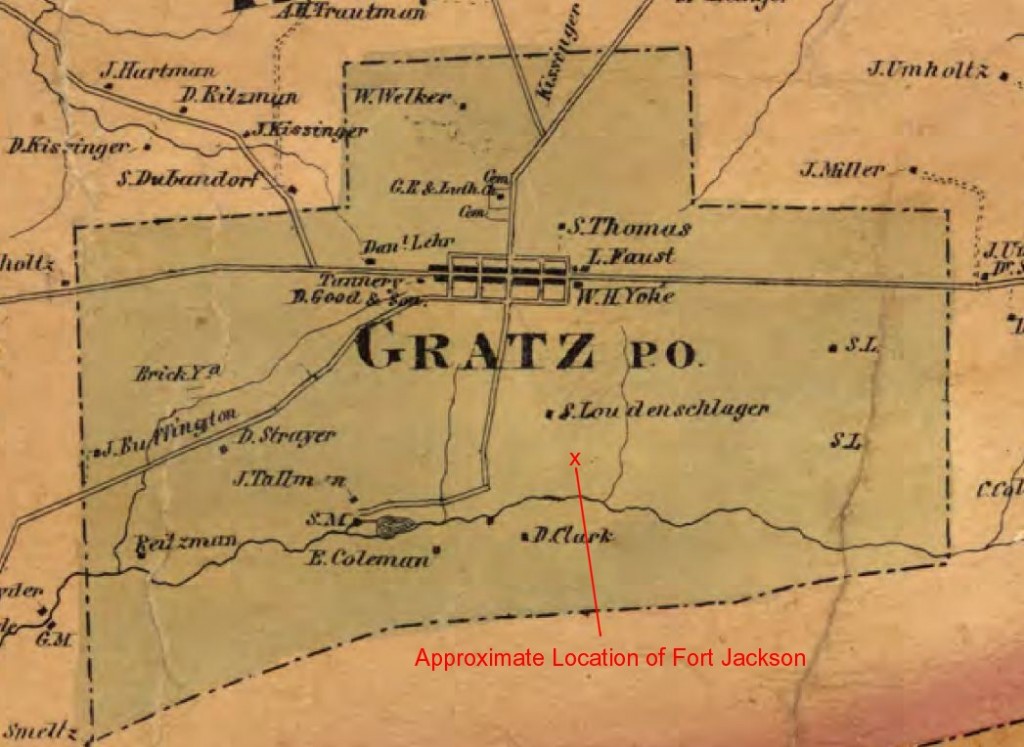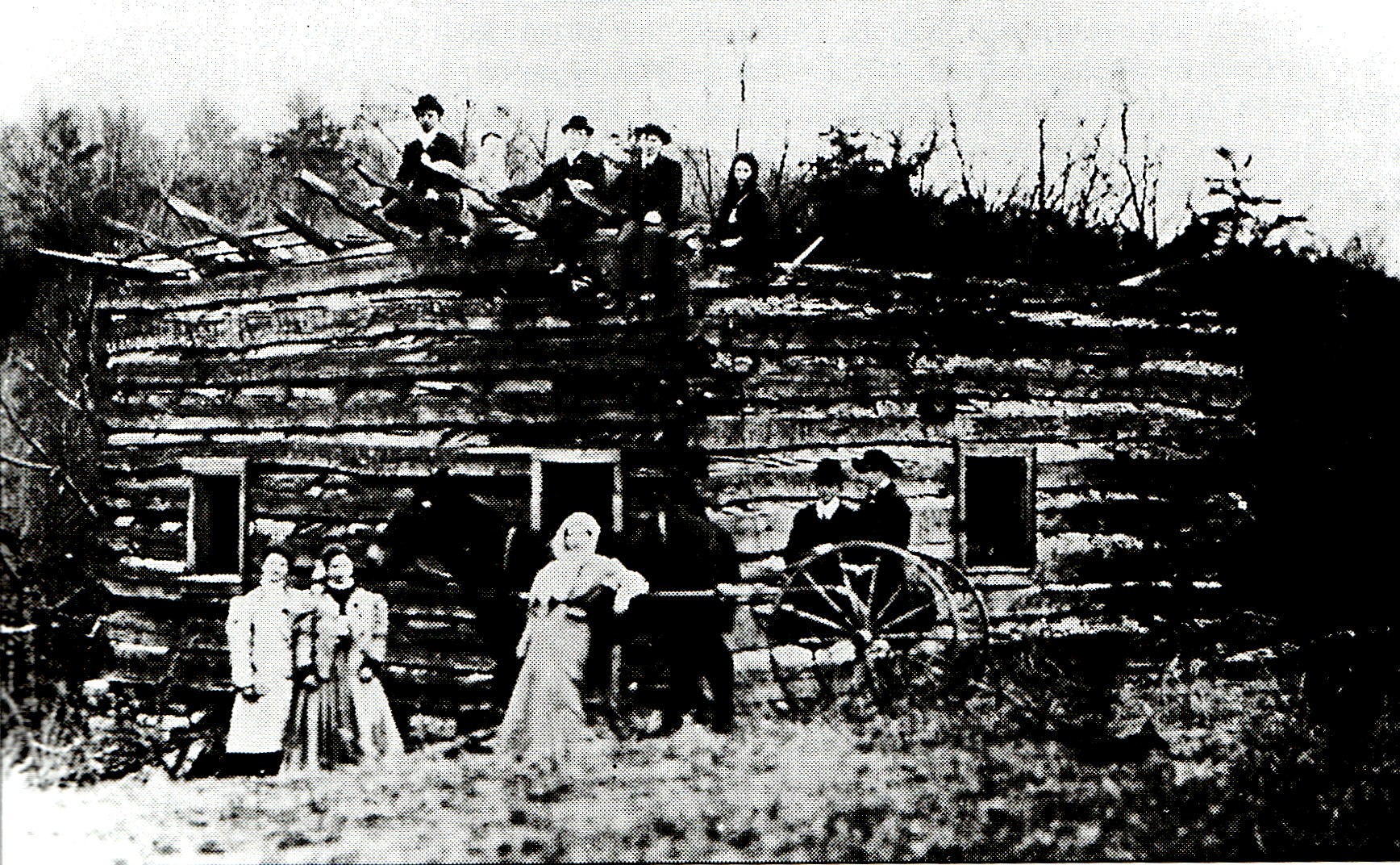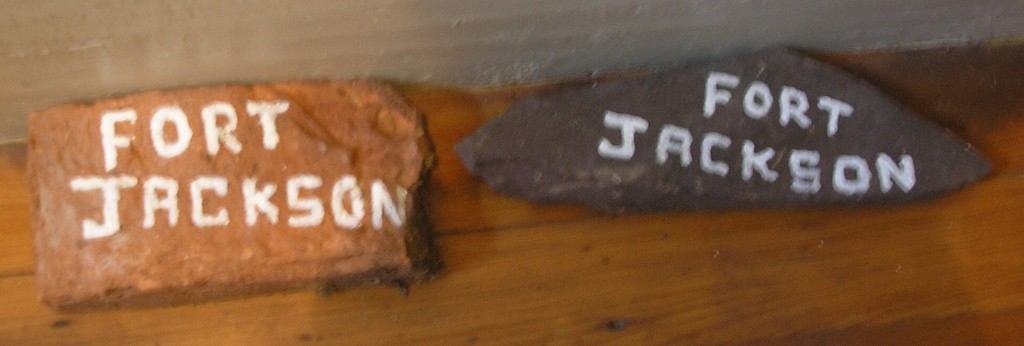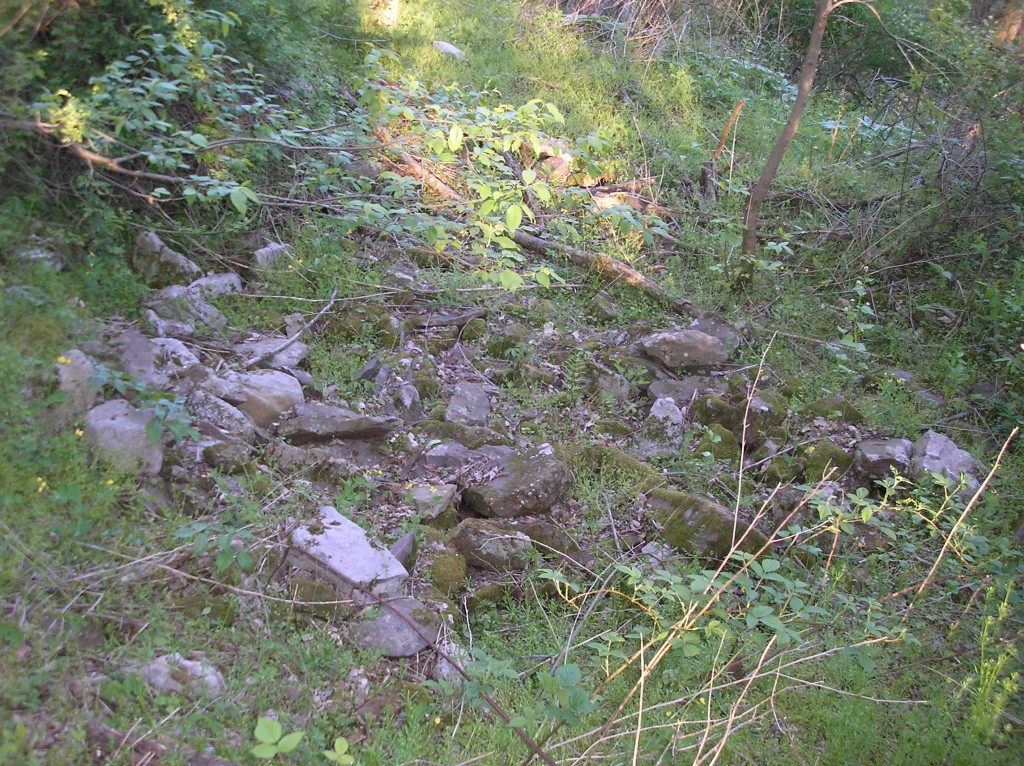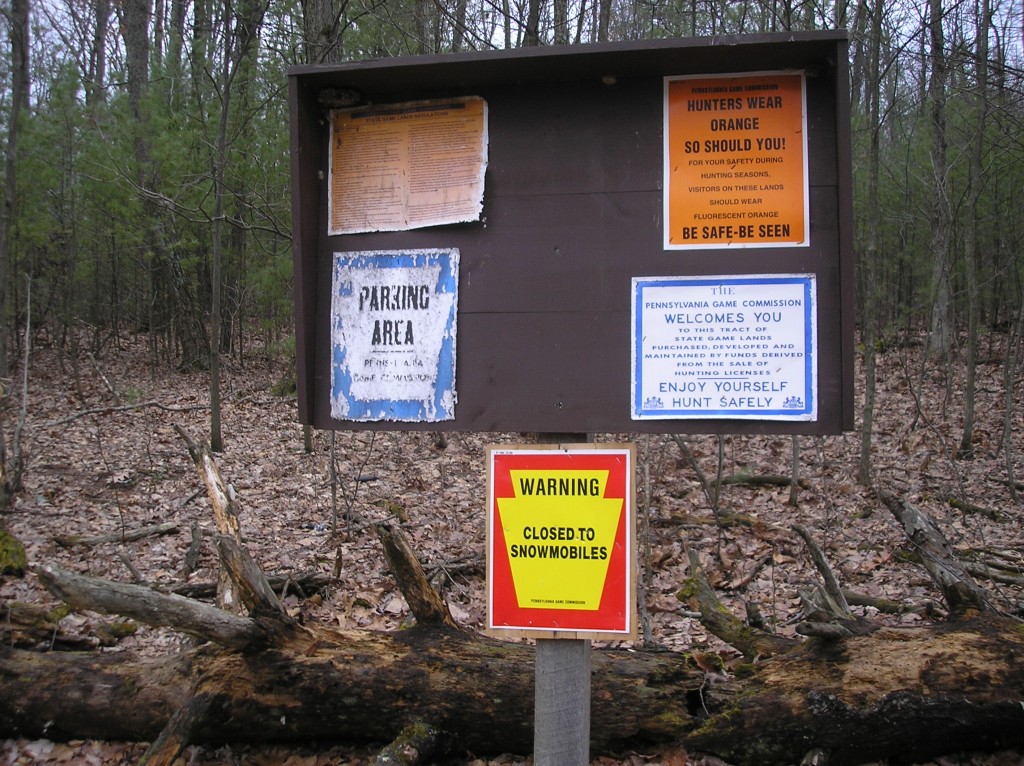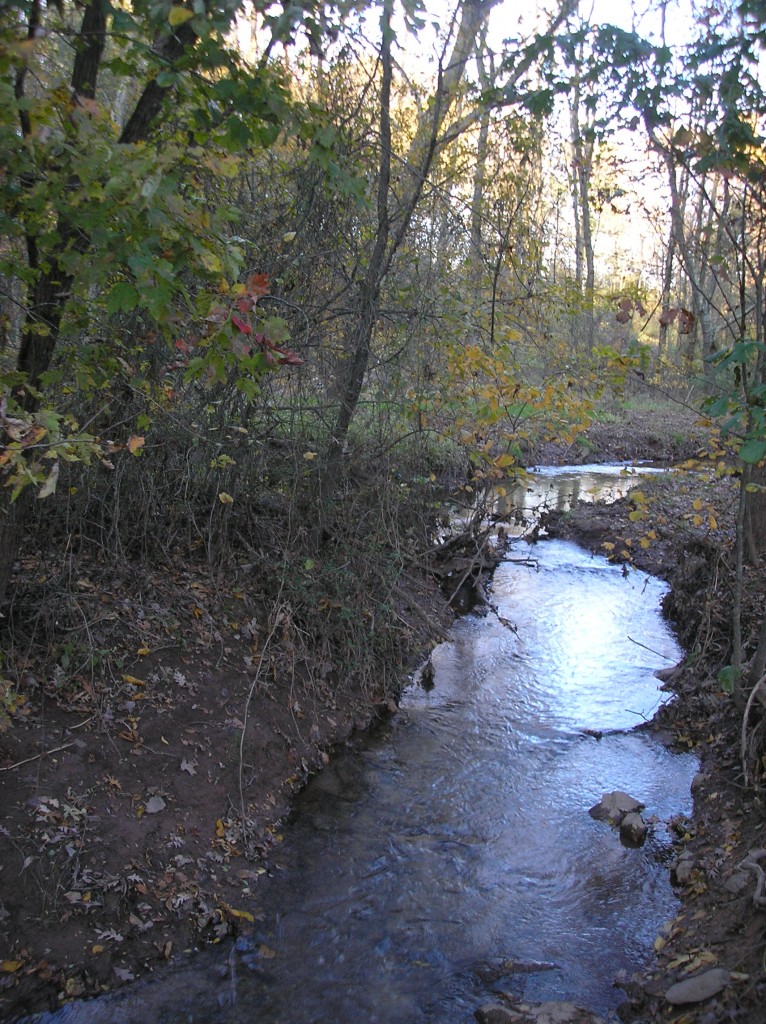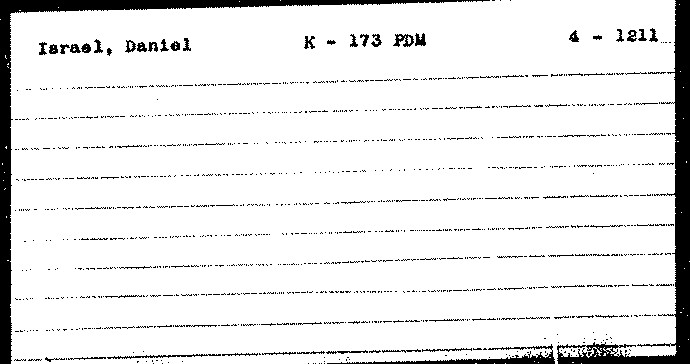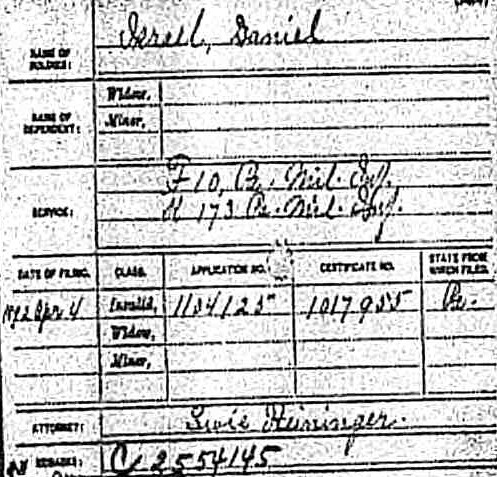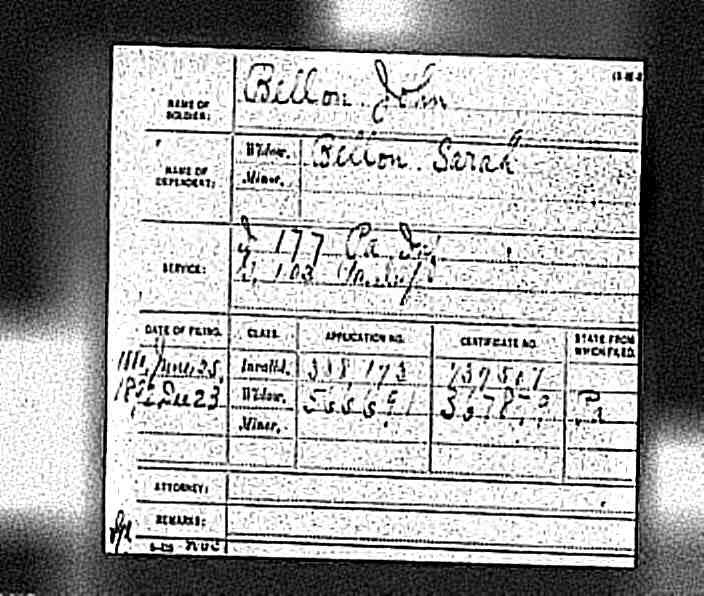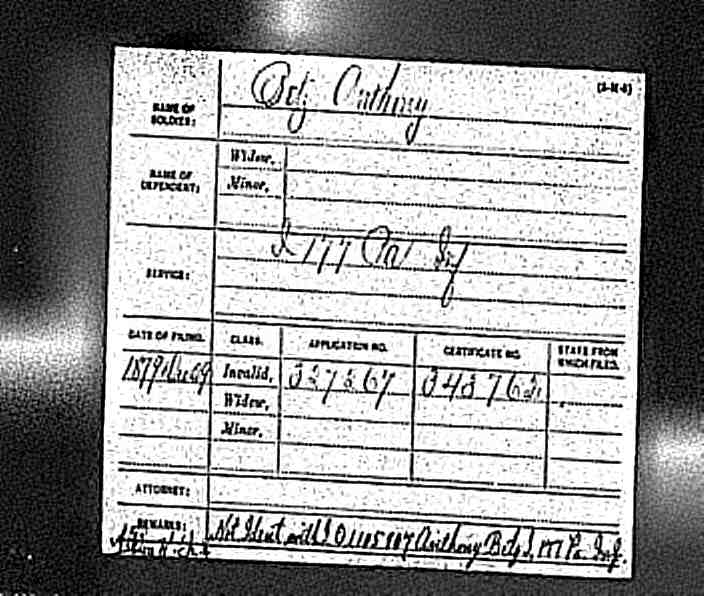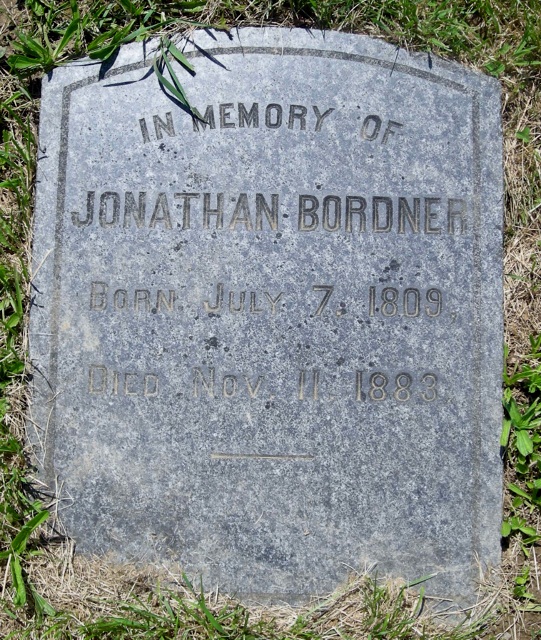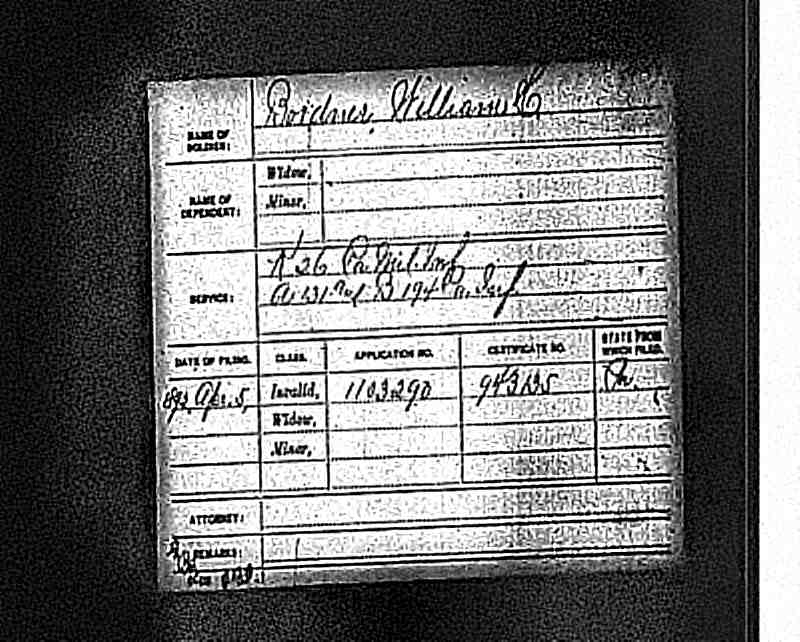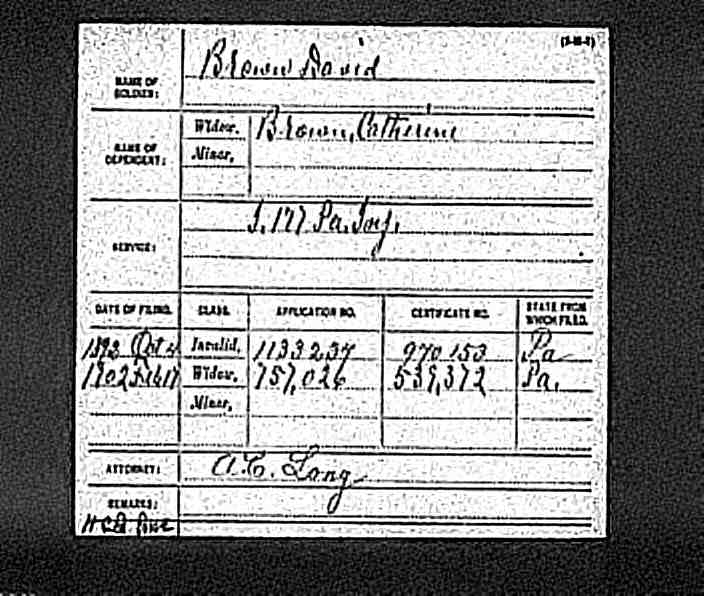Thanksgiving 1861 – Preparation
Posted By Norman Gasbarro on November 18, 2011
THANKSGIVING — The Governors of twenty States have designated the day for the celebration of the annual Thanksgiving. In Maine and Massachusetts the 21st inst., and in the following named States, Thursday the 28th inst. has been named as the day: New York, New Hampshire, New Jersey, Pennsylvania, Illinois, Indiana, Ohio, Wisconsin, Iowa, Michigan, Minnesota, Connecticut, Vermont, Rhode Island, Kansas, Maryland, Kentucky, Delaware.
Thanksgiving in 1861 was only a national day of celebration in that it was proclaimed by governors of a majority of the northern states as noted in the statement that appeared in the Farmer’s Cabinet on 28 November 1861, the day of thanksgiving that was proclaimed by Gov. Andrew Curtin of Pennsylvania.
Kind reader, Thanksgiving, that glorious old festival of savory turkies [sic], pumpkin pies, plum puddings, and swelling hearts, has again come round, and greets us with that reasonable of all commands, “BE YE THANKFUL!” How can we be otherwise, seeing we have so many and such mercies to be thankful for? Though war is in our land, most of our readers may still possess their homes and souls in peace and patience if they will, with plenty for the one and abundance of grace for the other. Heaven’s smile is on the other side of the cloud, and everywhere is peeping through, biding us trust and be thankful. — This our proclamation to you, dear reader, is, to BE THANKFUL — HEARTILY THANKFUL, and to receive the kind blessings that crowd your pathway today, in the Spirit of love and cheerfulness in which they are dispensed. It is the very height of ingratitude to be downcast and sullen when under the cloud. It cannot be always day, nor always June. The summer must have its tempests, the ocean its storms, the prairie its fires, the body its diseases, the heart its sorrows, and the history of the world as surely teaches us that wars ‘must needs come.’ These all serve their end in the Divine economy, and it becomes us to meet them all in firm reliance upon a Wise Hand that directs and governs all, and leaves not a sparrow to fall unnoticed. Grateful for our manifest blessings, grateful for the bright shinning beyond the cloud, grateful for the beautiful “bow of promise” that in the glorious old “colors” is already painted in beauty upon it, we bid you, one and all, be of good cheer. He that overcometh and possesseth himself in patience, shall see a glorious land filled with Peace, and a Union as blessed and enduring as the “red, white and blue” of heaven.
In its editorial for the day, the Farmer’s Cabinet took the position that wars are normal occurrences in the course of human history and are part of a Divine plan. The season of the harvest must proceed with giving thanks for the bounty of the year.
SERIOUS. Thanksgiving Proclaimed.
We did not need a proclamation by the Governors to call us to Thanksgiving for the bounties of the year. Thanksgiving is already proclaimed by Him “who openeth his hand and satisfieth the desire of every living thing.” The earth is keeping her harvest festival. From hillsides clothed with grain, from meadows covered with fattening flocks and herds; from valleys and prairies waying with corn; from orchards teeming with golden and crimson fruits; from barns bursting with plenty, and dairies dripping with fatness; there goes up the universal chorus, Praise ye the Lord. The trees clap their hands, the little hills rejoice on every side; the valleys shout for joy, they also sing.
What generous crops of hay for the cattle of the field! What a large yield of wheat and corn – estimated at a thousand million bushels already in the graneries! Our garners are full, affording all manner of store; the land floweth with milk and honey. We seem to hear the myriad voices of Nature crying, “Oh that men would praise the Lord for his goodness, for this wonderful works to the children of men. Let them sacrifice the sacrifices of thanksgiving, and declare his works with rejoicing. For he satisfieth the longing soul, and filleth the hungry soul with goodness.
The above editorial from the New York Independent as reprinted in the Farmer’s Cabinet on 28 November 1861 makes no mention of the war or its causes, nor does it make any distinction between conditions in the north or the south – only that praise and thanks was due for the goodness and plenty received by all.
An analysis of other voices heard in and around Thanksgiving 1861 proved that opinion was greatly divided on whether it was appropriate to be giving thanks at this time of war and how the citizen should respond to the proclamation. These voices will be presented in subsequent posts as Thanksgiving 2011 approaches.
The extracts of news articles presented above are from the on-line resources of the Free Library of Philadelphia.
 ;
;
